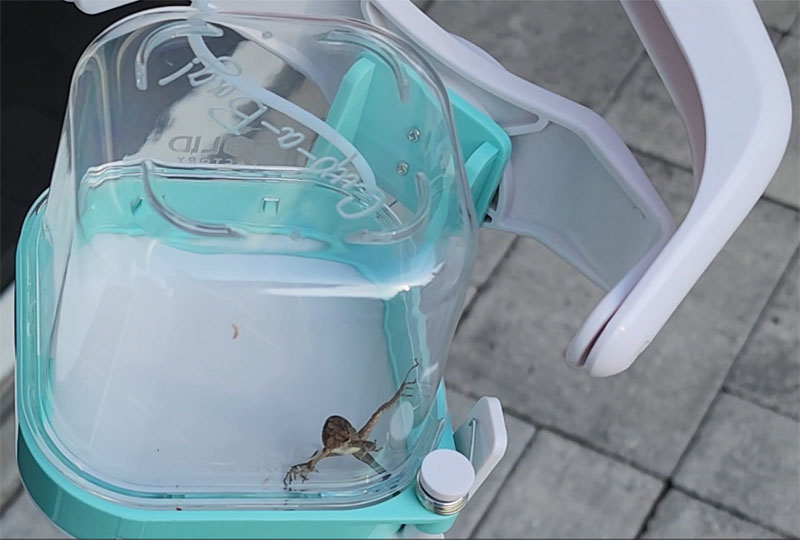
REVIEW – Everyone gets bugs in their home. For some folks, it’s no big deal. They capture and release them or squish them and move on. But, for many folks, the idea of being anywhere near anything creepy-crawly gives them the heebie-jeebies. Cup-a-Bug lets you dispose of the critter while safely remaining several feet back, hopefully eliminating your jitters. If you’re into protecting all creatures, regardless of how creepy they are, Cup-a-Bug allows you to safely capture and then release the invader unharmed. Let’s take a look at this cool critter-capturing contraption.
What is it?
Cup-a-Bug is a device designed to capture insects and other small critters (up to three inches in length) at a distance. It does so by letting you cover the bug in a clear dome and then slide a rigid cover over the bottom, trapping the offender. All this happens at the end of a long arm, with you located safely at the other end.
What’s in the box?
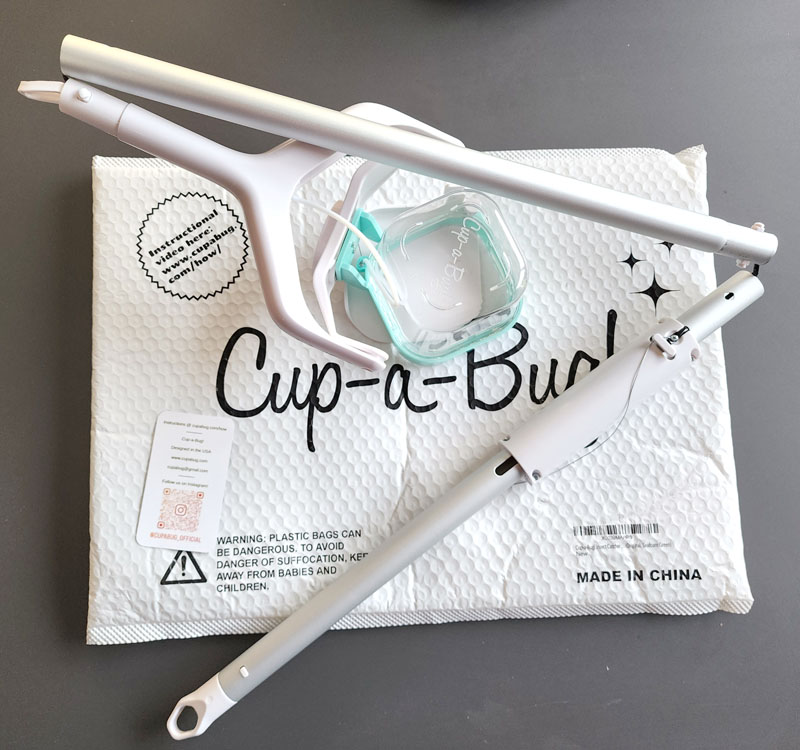
Cup-a-Bug ships in the definition of minimal packaging. It arrived in a bubble sleeve that contained the collapsed Cup-a-Bug and a card with links to instructional videos and company contact information.
Hardware specs
- Construction: Aluminum handle, acrylic dome trap, plastic articulated head, arm, and slider, string to move the door
- Overall length: 45″
- Approximate folded dimensions: 18.75″ x 6.5″ x 3.75″
- Trap dimensions: 3.4″l x 3.4″w x 3.25″h
- Weight: 14 ounces
- Head articulation: more than 180 degrees forward and back, I’d guess at roughly 30 degrees side to side
- Critter capture limitation: critters up to three inches, give or take
Design and features
Cup-a-Bug’s website is cool and kitschy with 1950s-style drawings and typography.
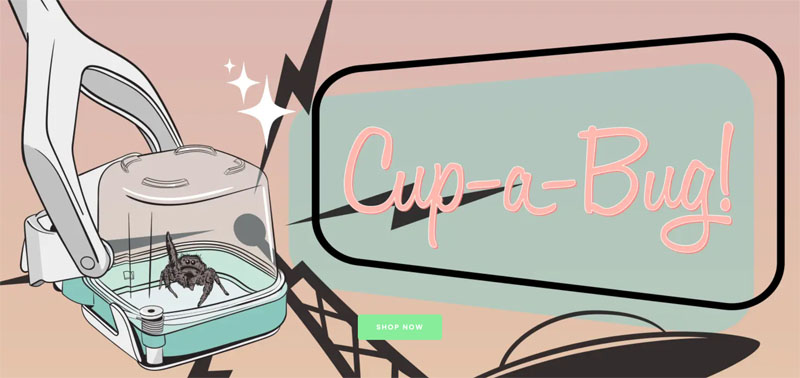
The website does a good job explaining Cup-A-Bug. Let’s see if I can do that as well.
Cup-a-Bug is essentially a 4-ish-foot-long bug-catching system.

If you are storage-challenged, Cup-a-Bug folds in three sections.
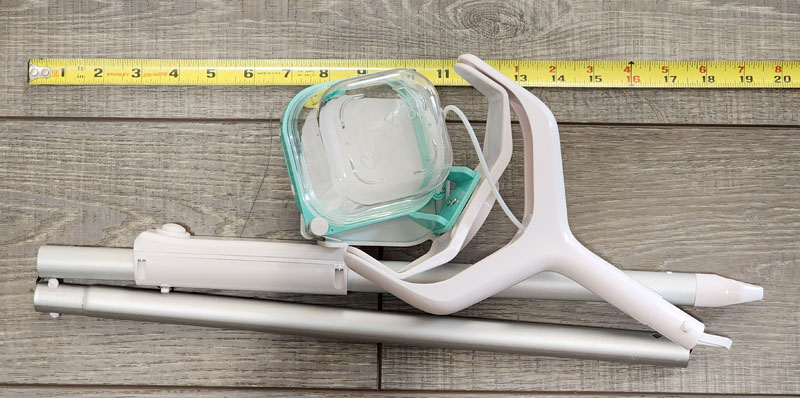
The three sections connect with push-button connectors.
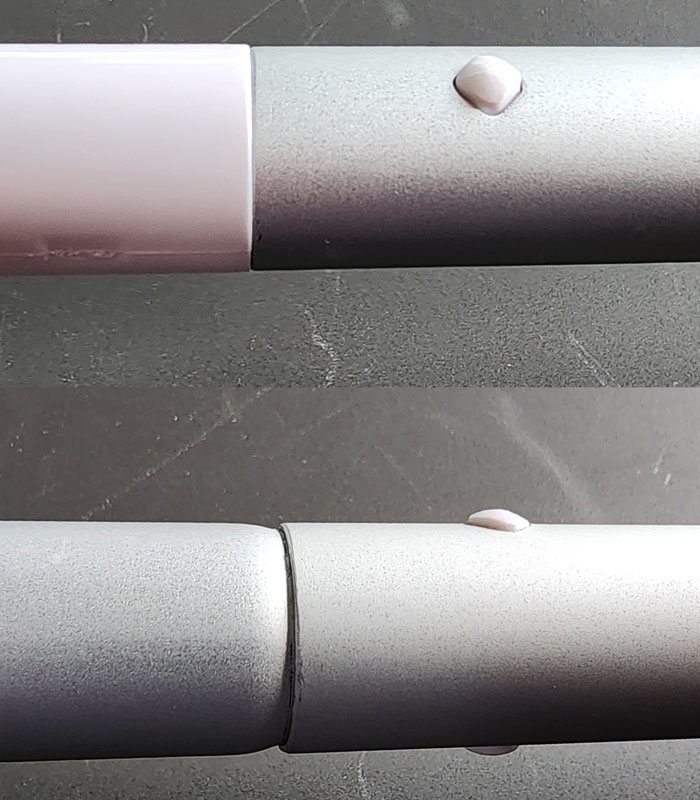
Here’s a peek at the business end of Cup-a-Bug.
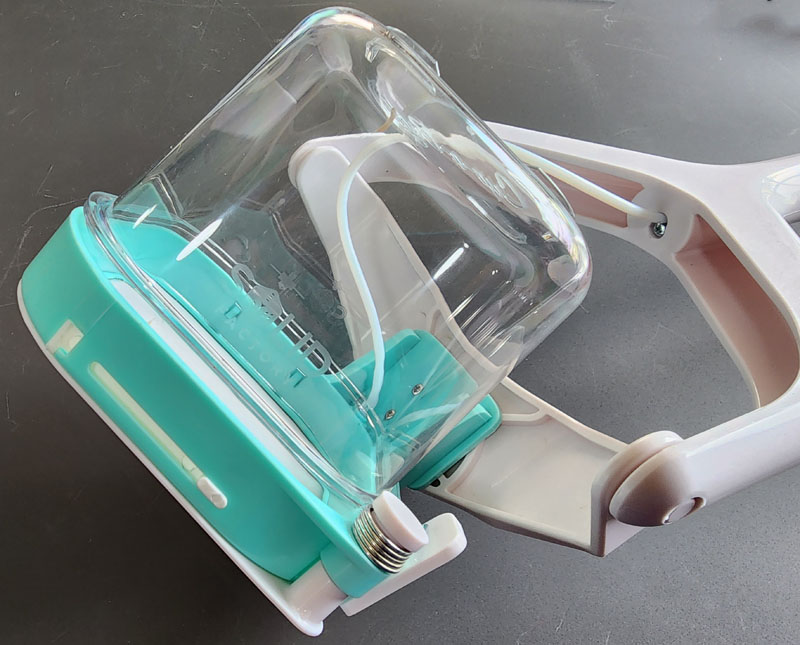
The clear dome gives you a great view of your imprisoned pest. The head is articulated forward and back as well as side to side. This design allows you to place Cup-a-Bug flat against surfaces at most angles.
Here, you can see the pivot points that let the head rotate more than 180 degrees.
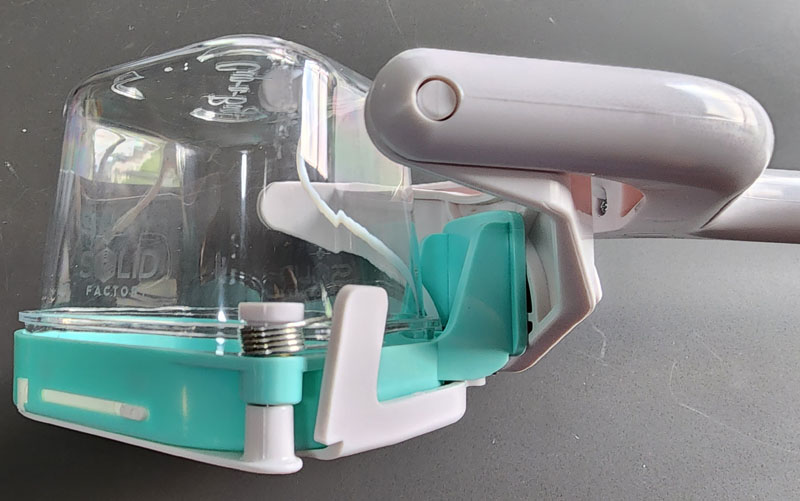
To rotate it, grab the trap and rotate it.
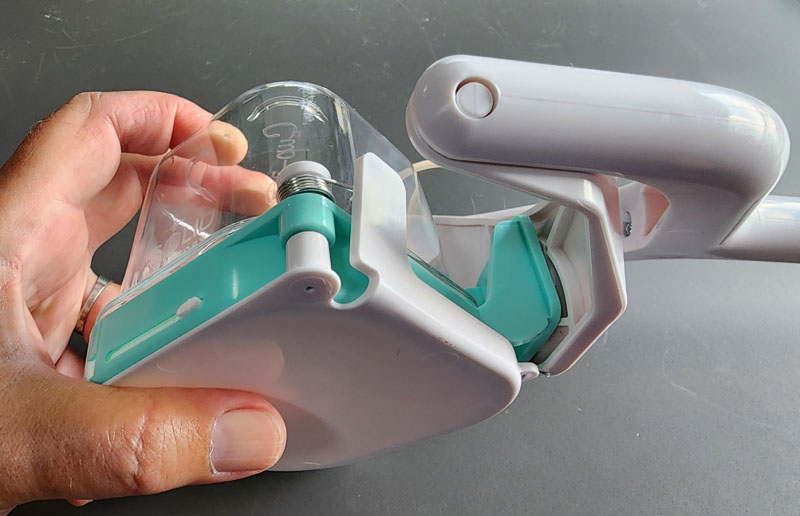
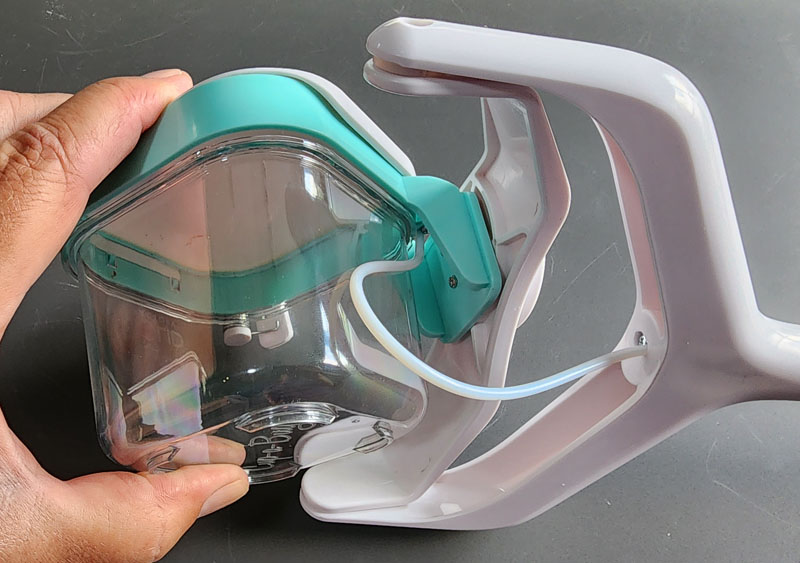
The teal tab that is visible below the Cup-a-Bug logo is the pivot point that allows the trap to rotate a bit from side to side. It doesn’t articulate much, perhaps 30 degrees each way, but it is enough to allow you to place the trap flat on angled surfaces.
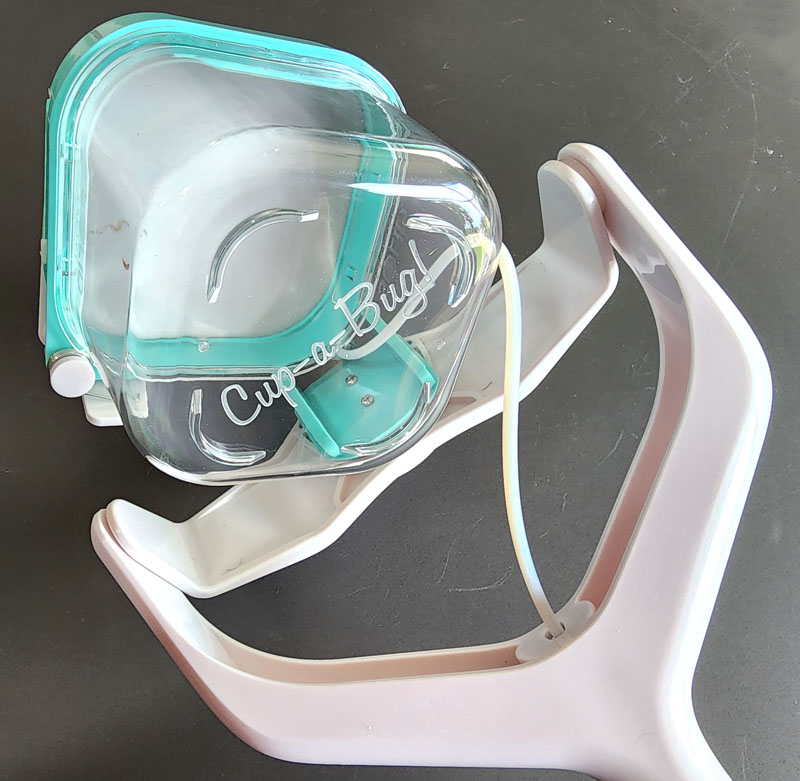
Do you see that white tube that extends into the handle? That is the route for the string that makes the magic happen. String? Yup, string. There is a string that runs from the control slider on the handle, through the handle, and all the way to the trap’s door. It slides inside a guide that doubles as an insert that keeps the handle sections together when disassembled.
Here, you can see the string extending from the tube to the door.
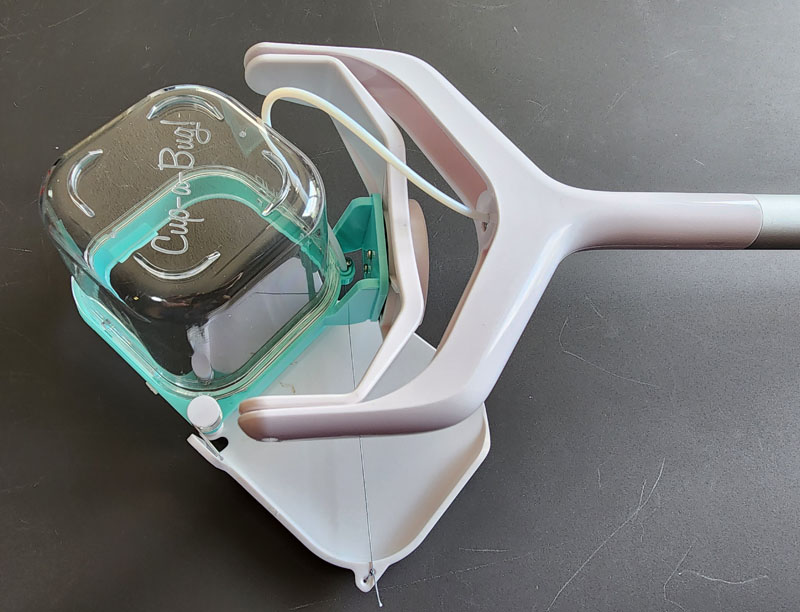
When you slide the control slider back away from the trap, the string pulls the door closed. Sliding it forward opens the door.

The door itself has a spring that forces the door open then you slide the slider forward. You can see the spring at the bottom of the trap in this photo.
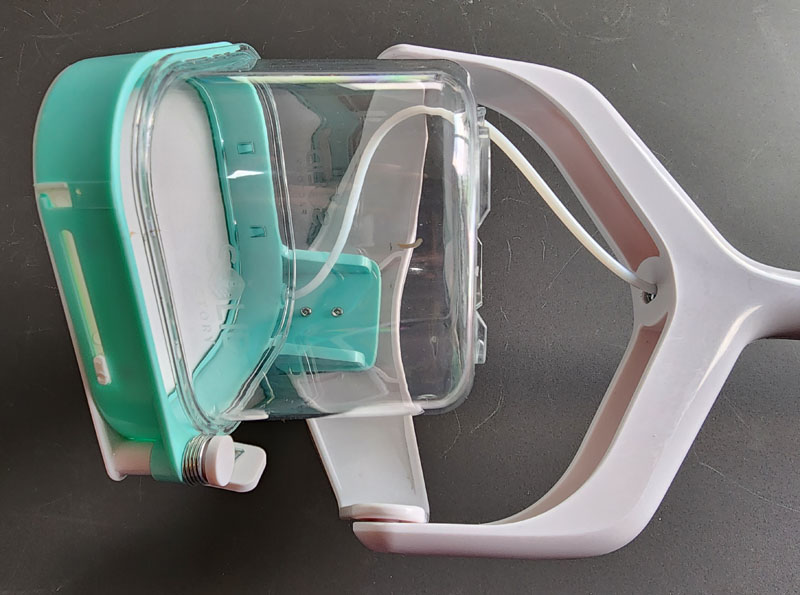
The slider is made of plastic and has a large release button that allows you to open the door.
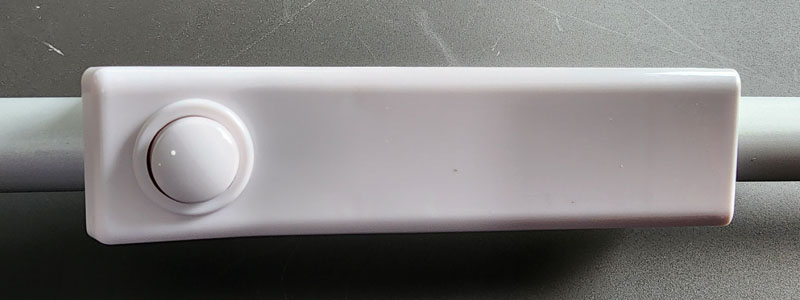
When you pull the slider to close the trap, the slider locks into a hole in the handle. Pressing the button releases it so you can open the trap again.
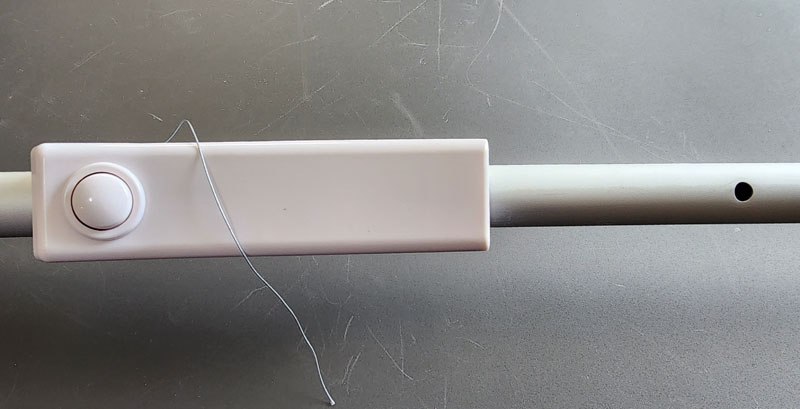
You can also see some excess string in the photo above. The string attaches to the underside of the slider.
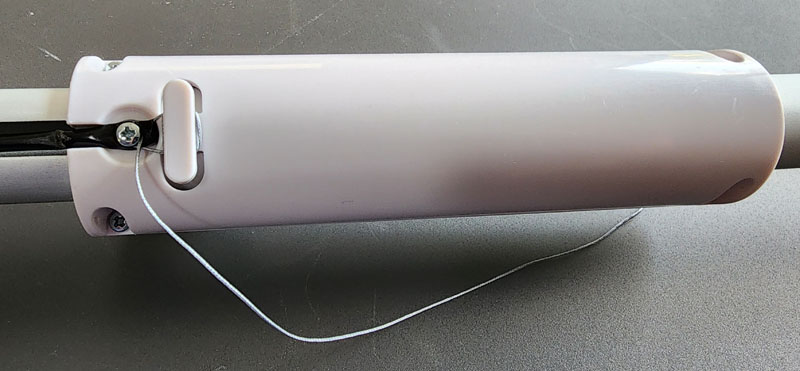
A how-to video on Cup-a-Bug’s website explains that if the string stretches and the trap won’t fully close, it is easy to fix.
- Loosen the small screw that secures the string and unwind it from the screw
- Unwind the string from the raised oval tab
- Pull the string tight to close the door
- Wrap the string tightly around the tab
- Wrap the string a couple of times around the screw
- Tighten the screw
When I first saw the string, I thought it was a little hokey. Now that I’ve watched the videos, I am impressed by its elegant simplicity. Even if you break the string, it is easy to feed in a new string and get back to critter capturing.
Here’s a look at the door in its closed and open positions.
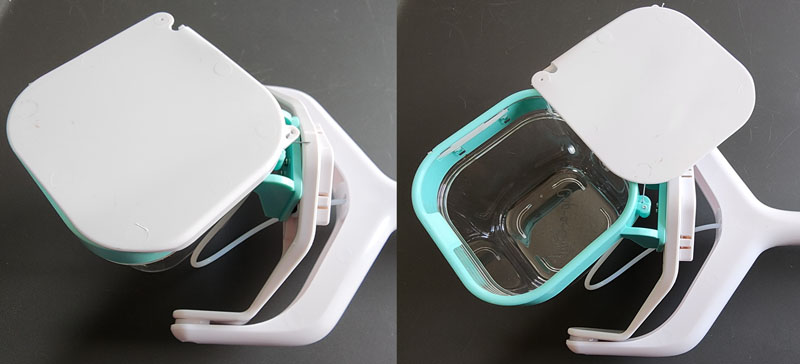
All this is great if you want to capture a bug on a nice, flat surface. What if your target tucks into a corner? What then? Cup-a-Bug thought of that too.
Pushing the small sliding tab on the side of the trap extends a small rubber brush of sorts. You can use this to shoo the bug out of the corner and onto flat capture-worthy spaces.
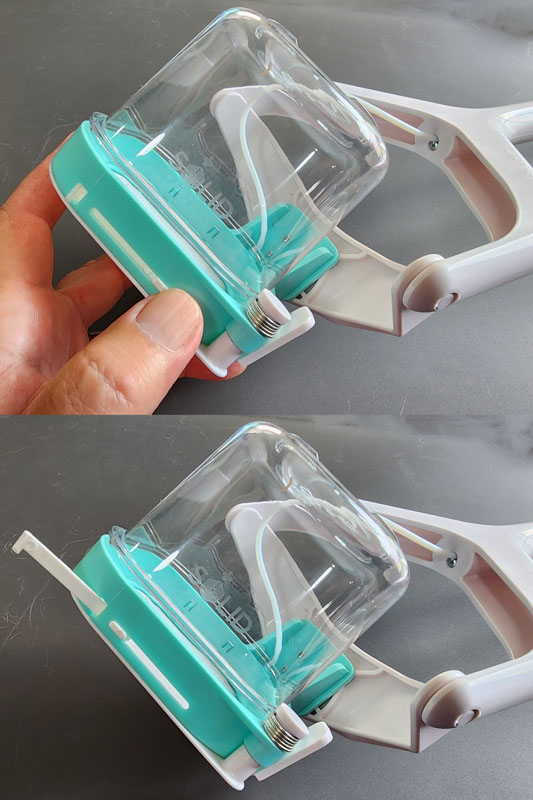
Setup
Cup-A-Bug comes fully assembled but in its collapsed state. To use, slide the sections of the pole together until the pins snap into their respective holes. You can press the pins and disassemble them again for storage. The internal string and cord keep everything together when it is collapsed.
Performance
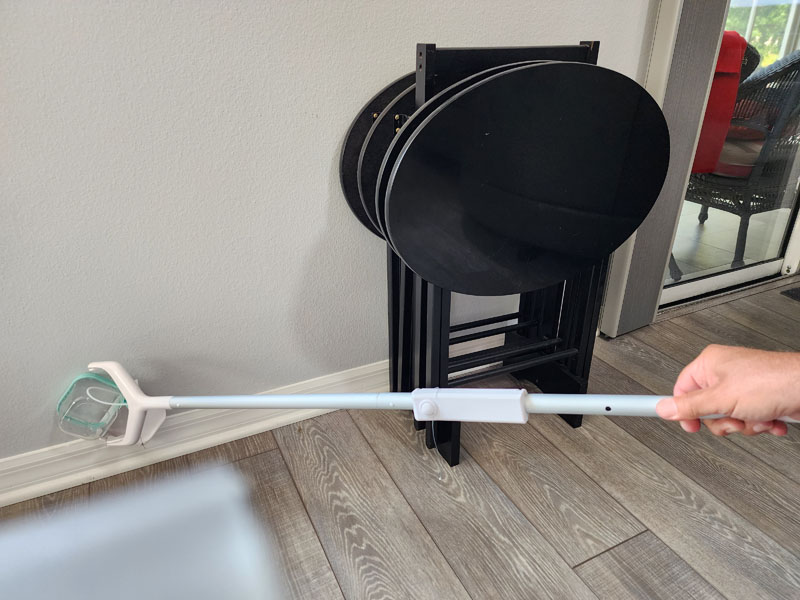
Here in central Florida, almost everyone uses a pest service to ensure that we don’t get bugs in the house. If they do get in, we typically find them legs-up and no longer moving. Cockroaches, or palmetto bugs as they are euphemistically called here, are the most invasive, and we almost always find them dead. Ghost ants are the other invasive pest but they’re way too small for Cup-a-Bug. What we do have is anoles.
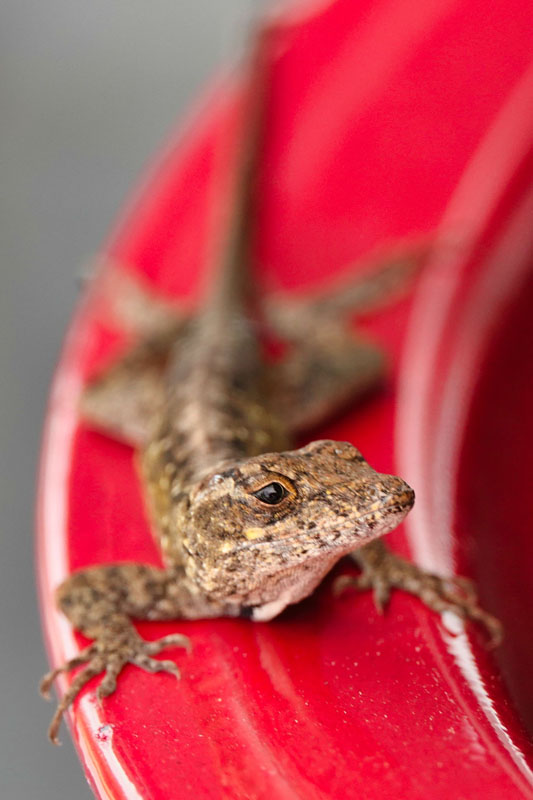
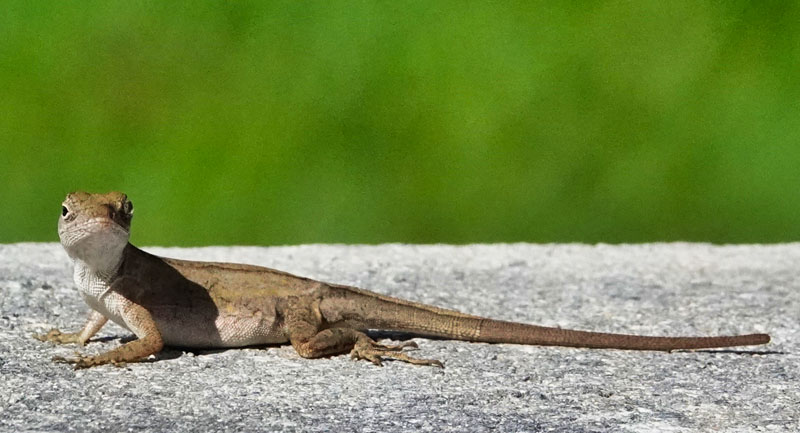
Anoles are small lizards and we have tons of them. From time to time, they get into our lanai – an enclosed outdoor space. We don’t want them in there as they could then get inside our home. Anoles are fast and quickly hide under furniture. They are a pain to catch and get back outside. Enter Cup-a-Bug!
Rather than let an anole into the lanai, I opted to try trapping one outside. It didn’t take long to find one on the outside wall of our lanai. Here’s a video showing just how effective Cup-a-Bug is.
In one shot, I was able to capture the anole safely and then carry it over to the grass. Run free, little buddy! I was surprised at how stupid-simple it was to capture one. Seriously, this video was my actual first attempt. After that, I captured a few more, easy-peasy. Since you are standing more than three feet away from your prey, they don’t seem to spook as easily, making it very easy to drop the trap over them and trap them quickly.
The same would apply to centipedes, spiders, roaches – whatever creepy-crawley you might have to deal with in your home. The best move after capturing would be to release them outside because as soon as you open the trap, they’ll be running, so squishing isn’t a good option.
What I like
- It works!
- It captures insects and small lizards easily
- Being able to capture intruders and release them safely outside is great
What I’d change
- I was a little concerned about the long-term durability of the string-operated system, but their instructional video makes it look like it is easy to maintain, so really, nothing
Final thoughts
I accepted this review offer on a whim. The tool seemed a little goofy and that intrigued me. I’m really happy I did. Anoles are beneficial as they eat insets. Therefore, we don’t want to kill them. Despite best efforts, when we try to capture them in our lanai, occasionally, it didn’t go well for the anole. Now, with Cup-a-Bug, we should be able to easily capture rogue anoles and rehome them outside without any ill effects for the anole. I guess we could do that as well for the occasional living palmetto bug we might find, even if I don’t have the same fond feelings for them as I do anoles.
The cool thing about Cup-a-Bug is that it is equally appealing to the bug-adverse as well as bug lovers. Bug lovers can catch and release while getting a great look at the bug through the clear acrylic trap. For the bug-adverse, you can capture the bug from a distance, never getting closer than almost four feet from the critter. You can then release it outside, drop it in the toilet, or wherever you choose to dispose of your adversary…from a distance.
Cup-a-Bug will be a fixture in our lanai, ready to rehome any anoles that might wander in. We also get anoles in our garage, so I can see Cup-a-Bug serving some garage duty as well.
If you have a child who is a budding entomologist or needs to capture some bugs for a school science project, Cup-a-Bug would be a perfect tool to both capture and observe the small beasts.
Whether you’re a bug and critter lover or a hater, Cup-a-Bug is a great solution for you.
Price: $39.99
Where to buy: Cup-a-Bug
Source: The sample of this product was provided by Cup-a-Bug.

Gadgeteer Comment Policy - Please read before commenting
The website is terrible,I put the wrong shipping address in and could not edit the address, I sent an email and did not receive a response, when I attempted to check my account it told me my password was incorrect, I tried to reset my password but never received a link to reset.